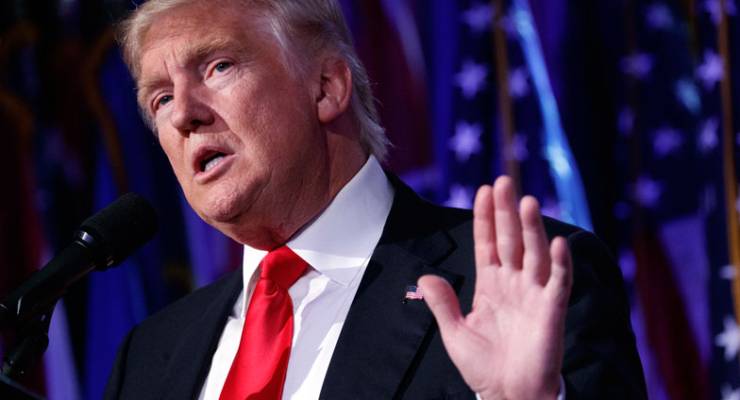
There can surely be no president in the history of the United States who has inspired such serious, persistent and widespread talk of impeachment as quickly as the Donald. From his potential Russia connections to a bizarre claim of wiretapping by the previous administration, his outlandish and possibly illegal behaviour has sparked calls from Democrats and Republicans that it might be time to remove him from power.
This commenced before he even stepped into the Oval Office. Within weeks of the election, it was reported that he might be impeached over a “soiree” with foreign diplomats. A week before his inauguration, The Independent warned his impeachment within 18 months was “highly likely,” while Eliot Cohen, in his January 29 piece for The Atlantic, wrote with casual, offhand certainty:
“It will not be surprising in the slightest if his term ends not in four or in eight years, but sooner, with impeachment or removal under the 25th Amendment. The sooner Americans get used to these likelihoods, the better.”
The trend has continued, with outlets as diverse as Time, The Nation, The Hill and CBS all reporting on separate calls for Trump’s impeachment. Change.org’s petition on the subject has attracted more than 200,000 signatures. News.com.au reported on ImpeachDonaldTrumpNow.org, another online petition, which has attracted more than 850,000 signatures. Lawyers said the wheels of impeachment were already in motion.
Article two, section four for of the United States constitution states: “The President, Vice President and all civil officers of the United States, shall be removed from office on impeachment for, and conviction of, treason, bribery, or other high crimes and misdemeanors.”
[Rundle: a quick shower of praise, then the stinking reality of President Trump]
Advocates argue various breaches warranting of article two, most relating to Trump’s overseas business dealings, but how likely is it to actually happen? Dr William Partlett, senior lecturer at Melbourne Law School, told Crikey that impeachment is largely a political process and one that would require Trump to lose the support of his party.
“The constitutional procedure is that the House of Representatives impeaches the president by a simple majority and then the Senate sits in judgement on whether the president is subsequently removed, after formal proceedings that look like a trial presided over by the Chief Justice,” Partlett said. “To remove the president, you need a two-thirds majority in the Senate.”
Initiating the impeachment process is, theoretically, the easy part. Only two presidents have been impeached so far, Andrew Johnson and Bill Clinton. Johnson was impeached for his breaches of the now repealed Tenure of Office Act, while Clinton faced the process on the grounds of perjury and obstruction of justice in the aftermath of the Monica Lewinsky scandal. In the scandal that followed Watergate, Richard Nixon was facing almost certain impeachment when he resigned in 1974. Both Clinton and Johnson were acquitted in the Senate.
“The key rule for impeachment and what makes it so hard is that requirement for a two-thirds majority to vote in favour of removal in the Senate,” Partlett said.
And, as David Salter pointed out in Crikey, Trump has a comfortable majority in both houses. The Republican establishment, despite his clashes with them during his campaign, seem to have largely fallen into line, and there has been no public talk of impeachment.
“There is no automatic trigger that can compel either the House or the Senate to do anything,” Partlett said. “Except, of course, for public opinion for the Congress to play its constitutional role.”
In other words, Trump can insult every minority under the sun, be caught in a million lies, use the office to hector businesses on his family’s behalf, be conflicted by his own business interests and commit countless other infractions that breach the spirit and letter of the US constitution, and as long as Republicans are happy to have him in office, he’ll stay.
[Rundle: is Donald Trump staging an actual coup?]
“Assuming the Republicans remain loyal to President Trump, the Democrats would, one, need to have a majority in the House of Reps and two, need 67 out of 100 votes in the Senate,” Partlett said, adding this would be very unlikely, unless “Trump does something very, very foolish and a number of Republicans also vote to remove him”.
The other method of removing a sitting president under the constitution, the 25th amendment, relies on his cabinet declaring him unfit for office, something even more “far fetched”, according to Partlett.
Of course, while successfully removing Trump would be a cathartic moment for his opponents, it’s practical result would not really address their concerns.
“Even if Trump were impeached, this would bring on the Vice President [Mike Pence] so would likely not lead to a major change in policy,” Partlett said.








Midterms aren’t that far off – let’s hope they correct that drift to the land of the GOP lotus eaters.
If this is what a presidential republic looks like, you can shove it. The great songwriter and now Federal Court judge Judi Small once put it in a song called Global Village: “You can be a politician, no matter what you’ve done, and justice comes in need;es or the barrel of a gun.” This bloke is a dead set crook, a nepotist and a scoundrel, but hey he is the POTUS. This man’s party and himself have lied and obfuscated in disrespect to the office of POTUS for 8 years. Now they expect we should revere the tosser.
To me the most ironic thing about this would-be dictatorial buffoon and his clown posse is it looks like it holds the potential for the rise in circumstances the likes of Jefferson foresaw, when he ratified the Second Amendment to their Constitution :- “A well regulated militia being necessary to the security of a free state, the right of the people to keep and bear arms shall not be infringed”.
So, really, the only hope is for a major heart attack or other incapacitating illness.
FFS, the CIA had a lot of practice in that sort of thing, rapid cancers, exploding cigars, men who stare at goats…